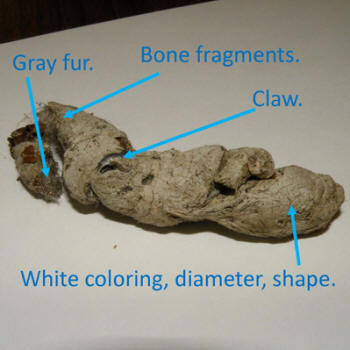 |
 |
||||||
|
Science: Wildlife Tracks and Signs - Scat! Scientists and outdoor enthusiasts alike get excited when they come across a peculiar piece of scat. It may sound a little yucky at first, but observing scat (better known as wild animal poop) reveals many clues about wildlife living along the Greenway.
Territory: Scat is often intentionally placed in a given location by animals to mark territory. A weasel may leave some scat on top of a rock to say, “Hey this is my rock, and you better stay away!” As a point of reference: Scat can even be used as a trail marker. At a trail junction, where two trails meet, a fox may place some scat there to serve as a scent post. This will help for when the fox is returning home, for it will smell the scat, recognize its scent, and say, “Oh, yeah. This is my scat. I know where I am. I turn down this trail to get home to my den.” Local diet: Scat is also cool, because one can observe what local animals have been eating; whether it’s plant or animal material. If you were to see small, rounded pellets full of plant-like material, you could assume you were looking at herbivore scat of a rabbit or deer scat. If you were to see bones and fur in the scat you might assume it’s carnivore scat of a fox or coyote. Local wildlife species: Scat can help to narrow down what food is available to wildlife and to narrow down what species you are tracking according to their typical diet. Think about the animal as an herbivore, carnivore, or omnivore. Look for just plants, or just bones and fur and insect parts, or both. (Even though an animal may be known as being primarily an herbivore or a carnivore, there is a chance that it has been eating more like an omnivore, depending on what food sources are available at a given time.)
Seed dispersal: Plants, such as pokeweed, have seeds that can only be dispersed by birds that eat them. A bird will eat the purple berries of the native pokeweed plant. It will eventually drop its scat, filled with the pokeweed seeds, likely hundreds of feet away from the original plant. The seeds will grow, while the rest of the scat provides valuable fertilizer and the bird has effectively planted a source of food to be available in the future. (*Pokeweed seeds are poisonous to mammals, including humans.)
|
